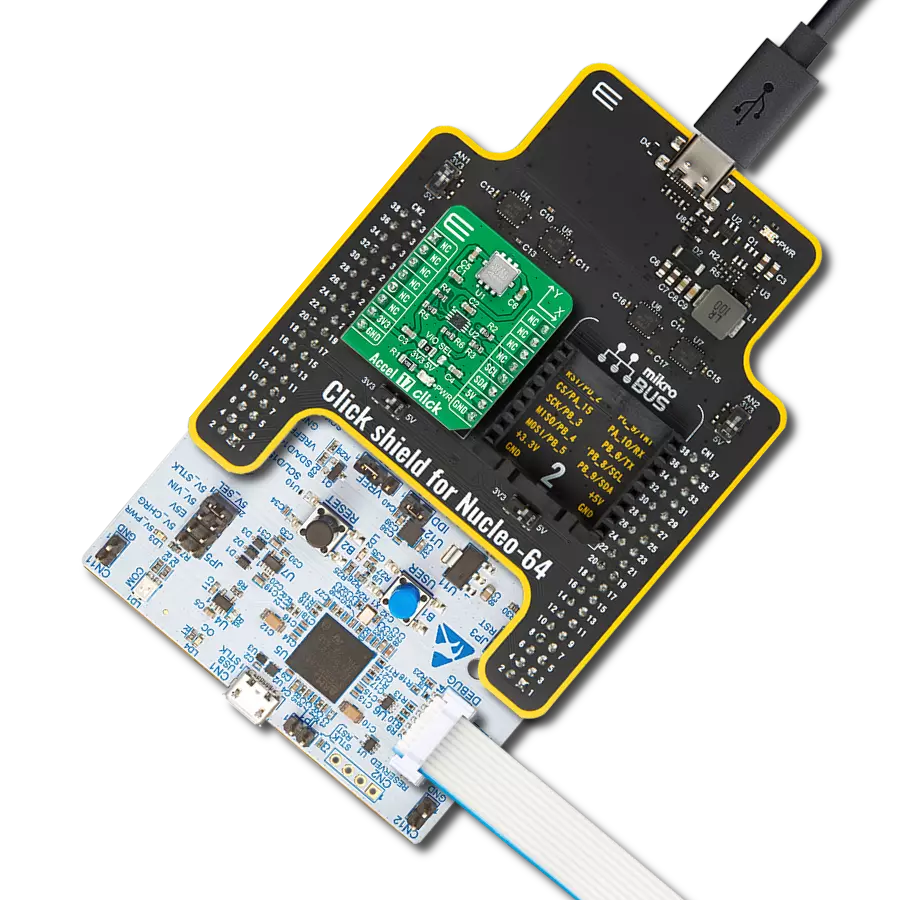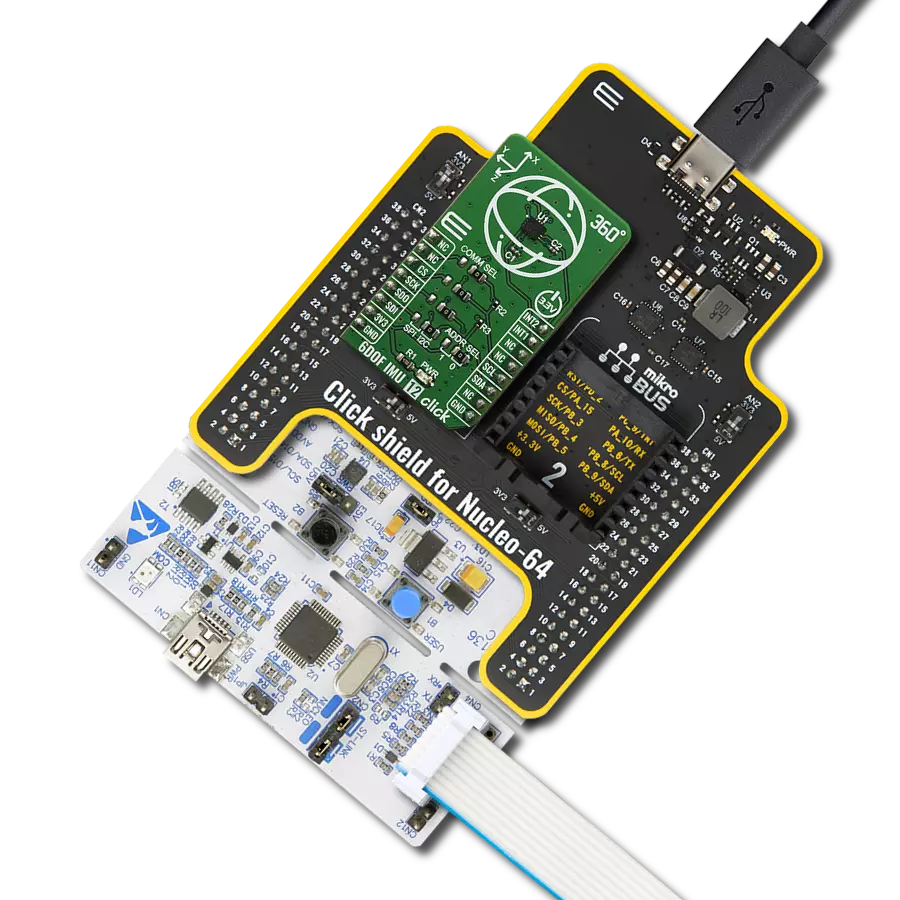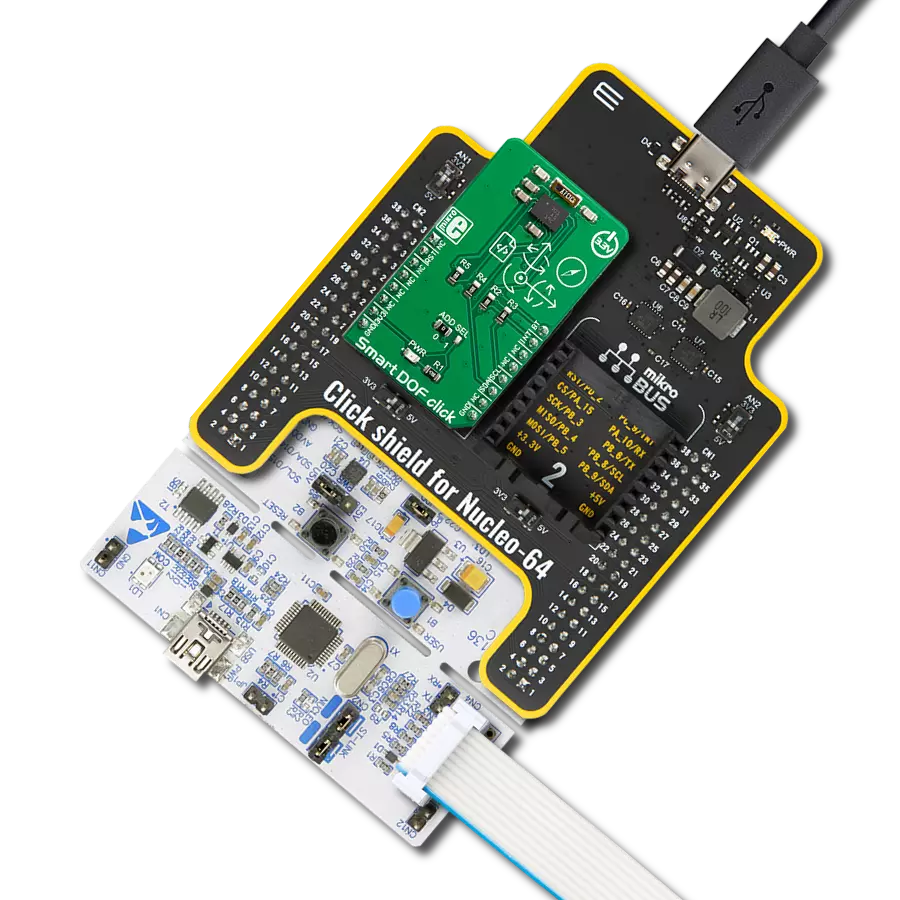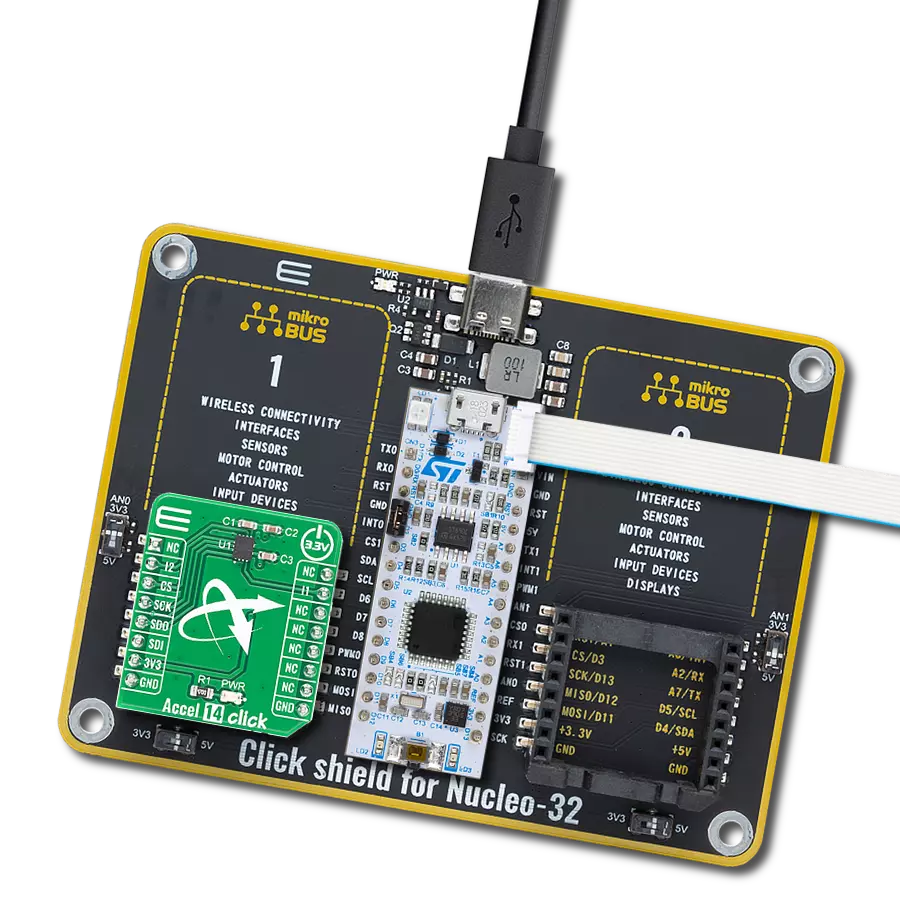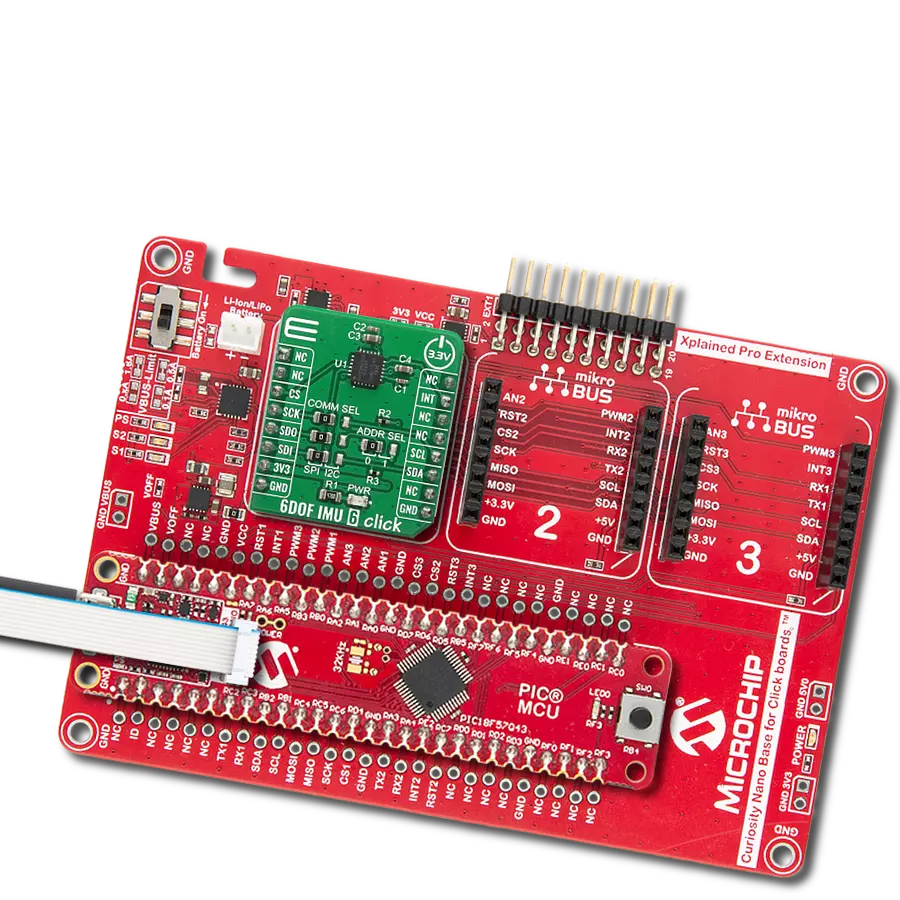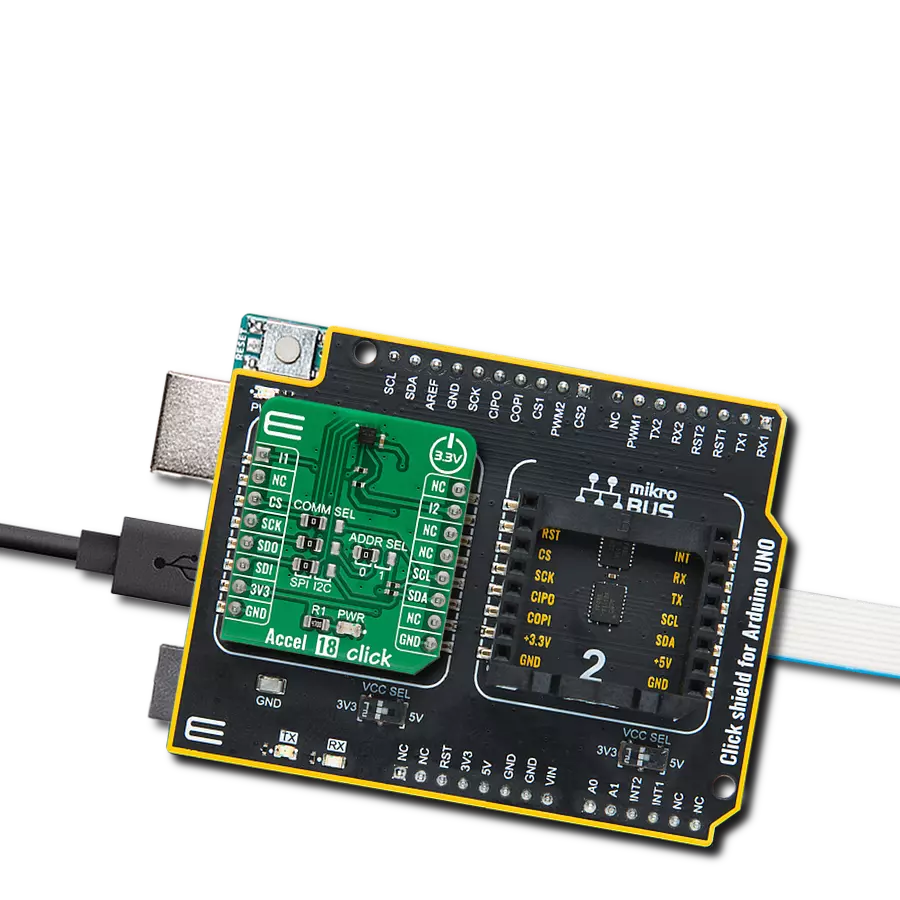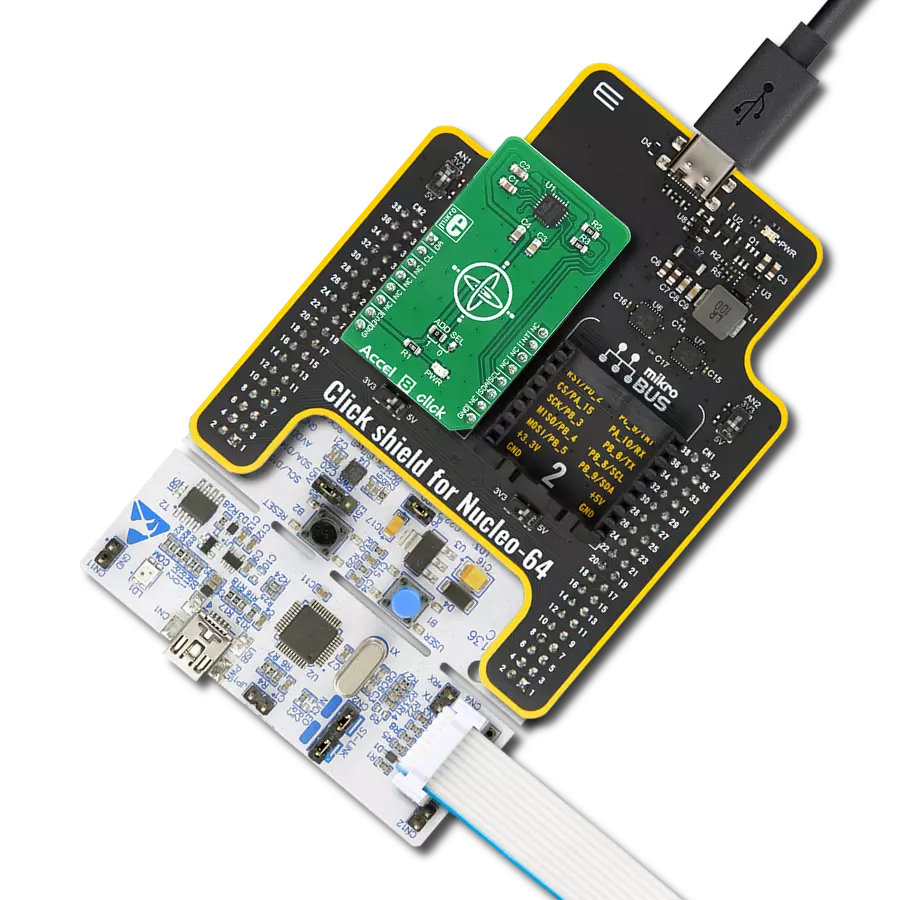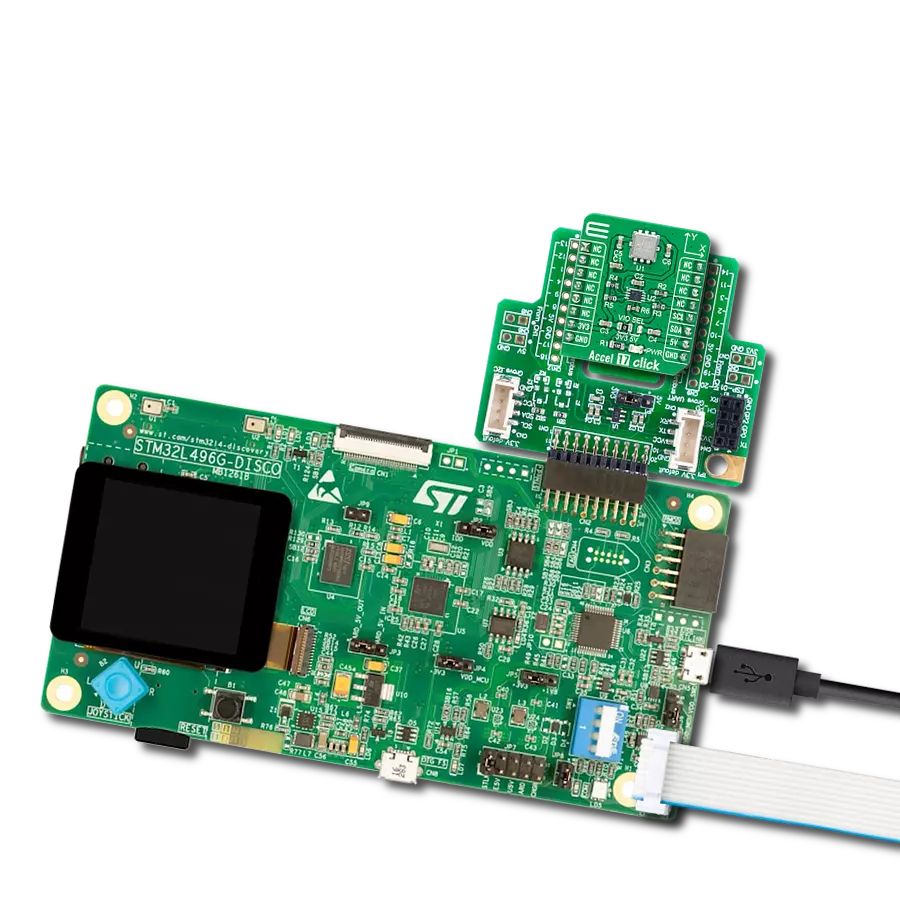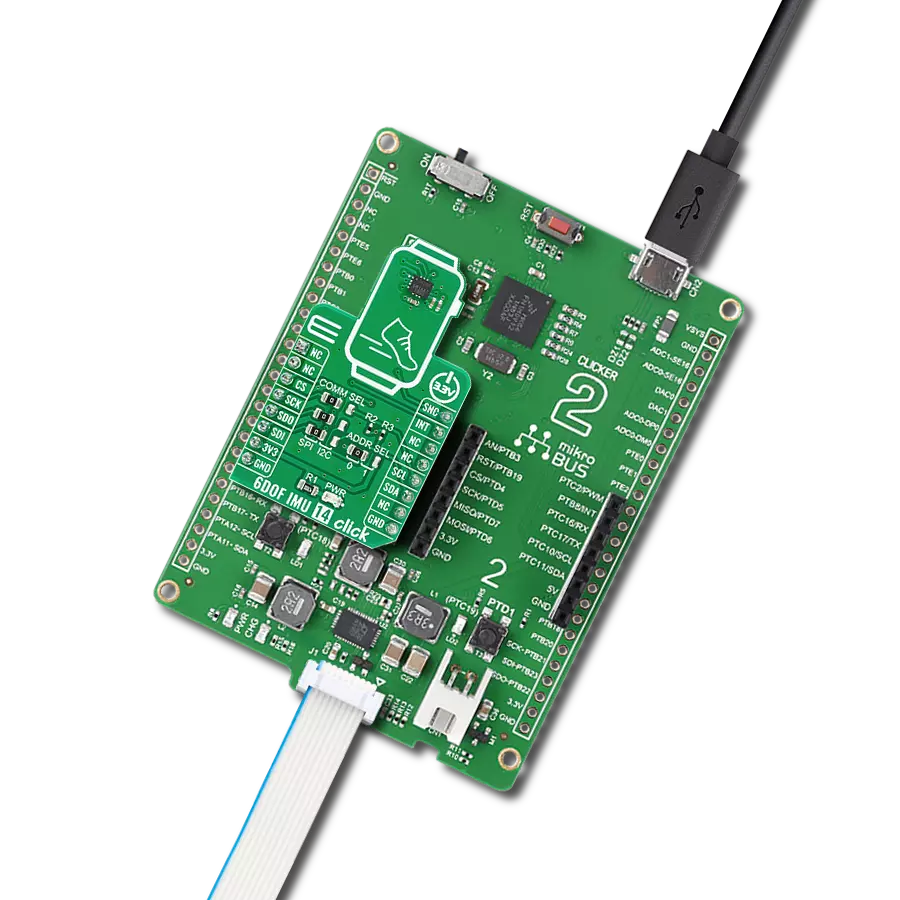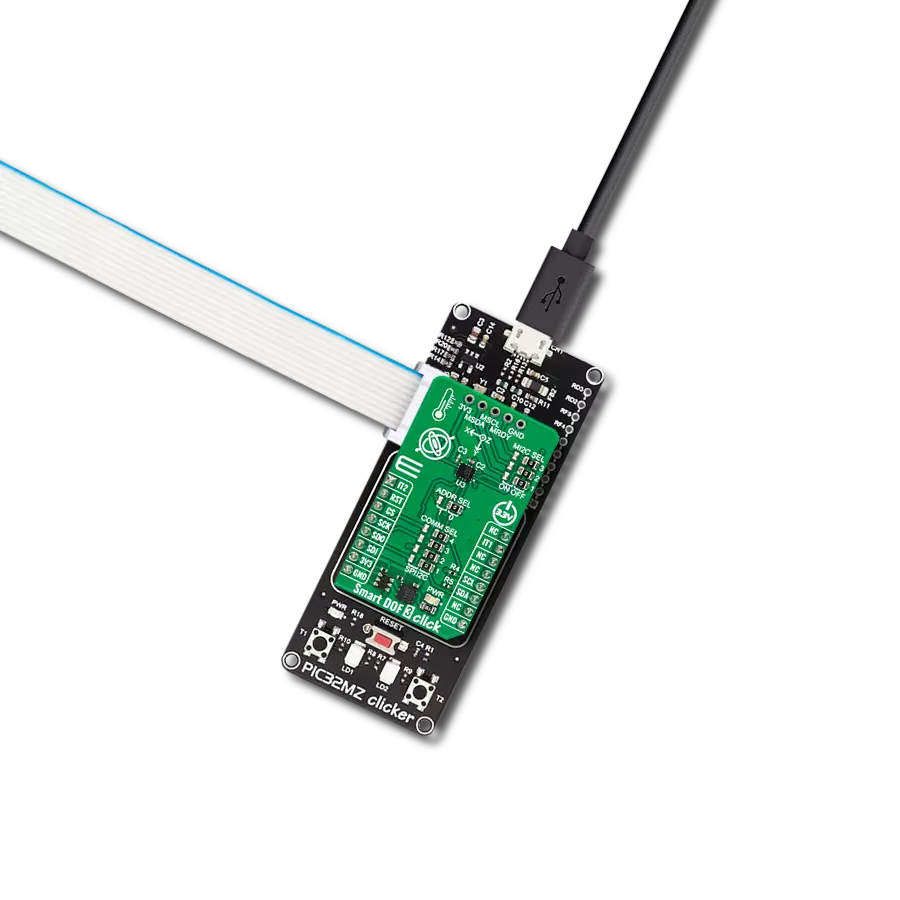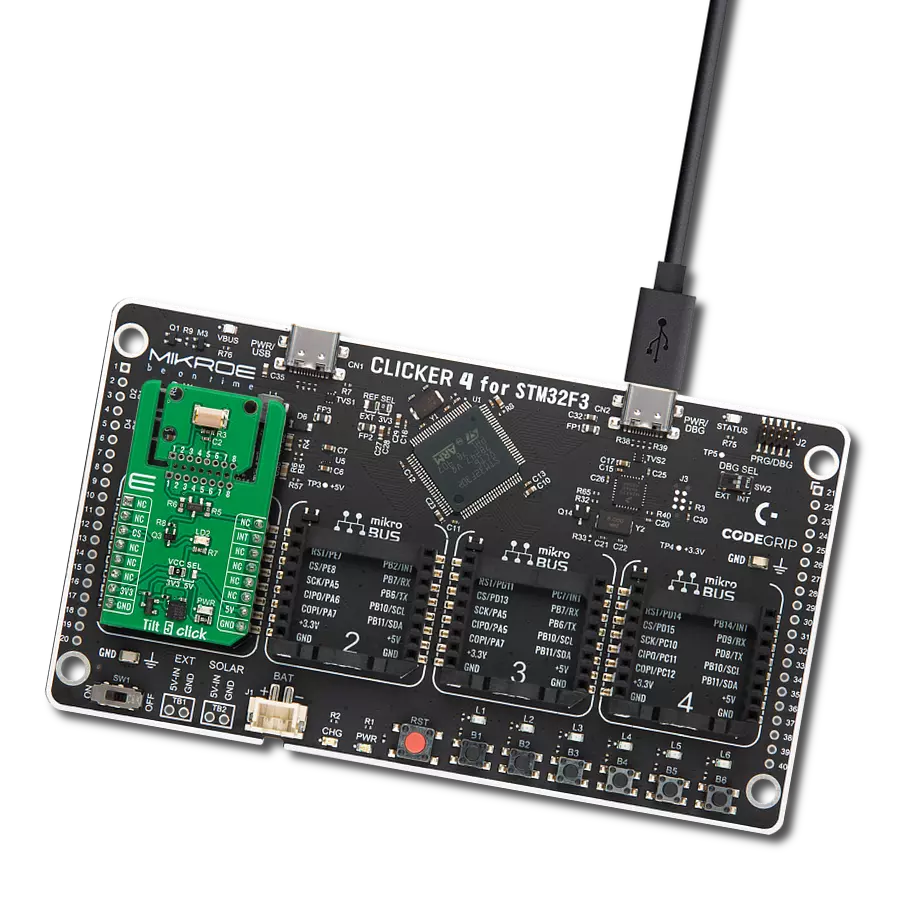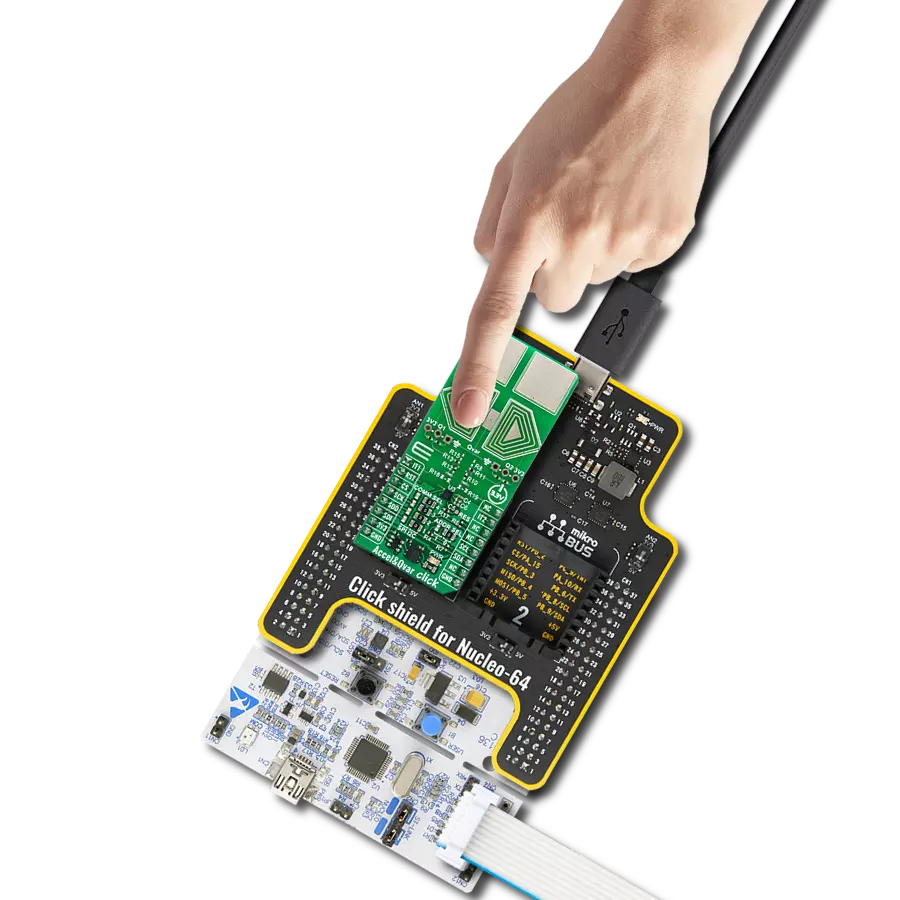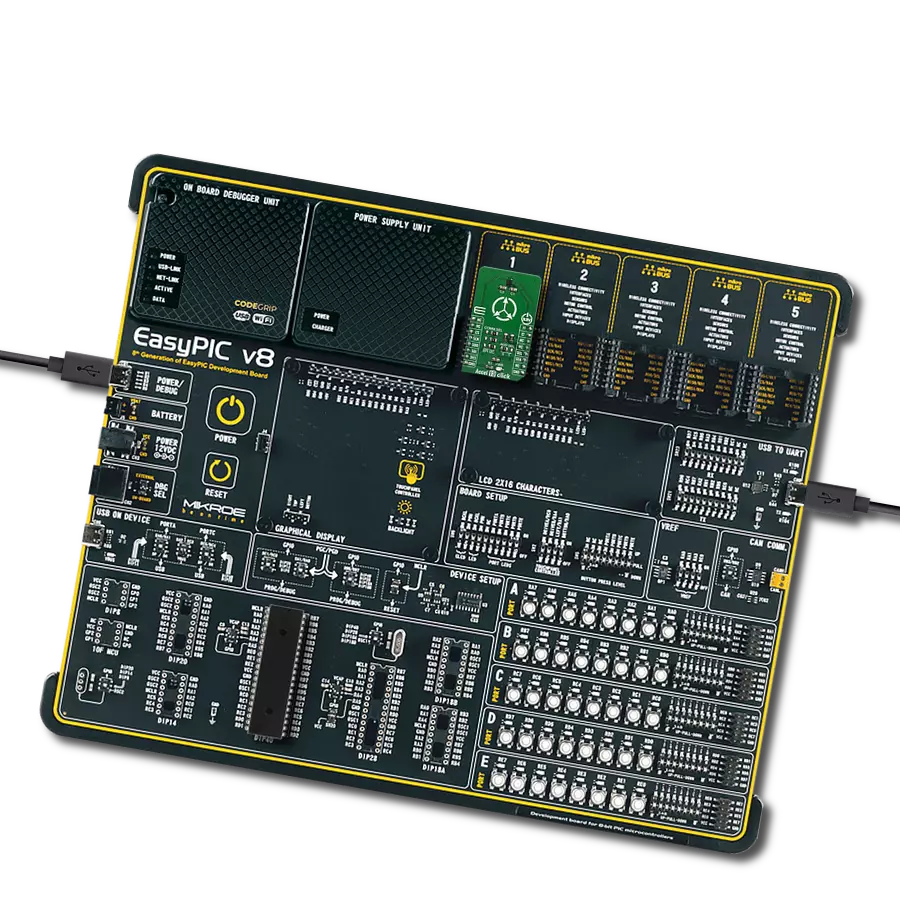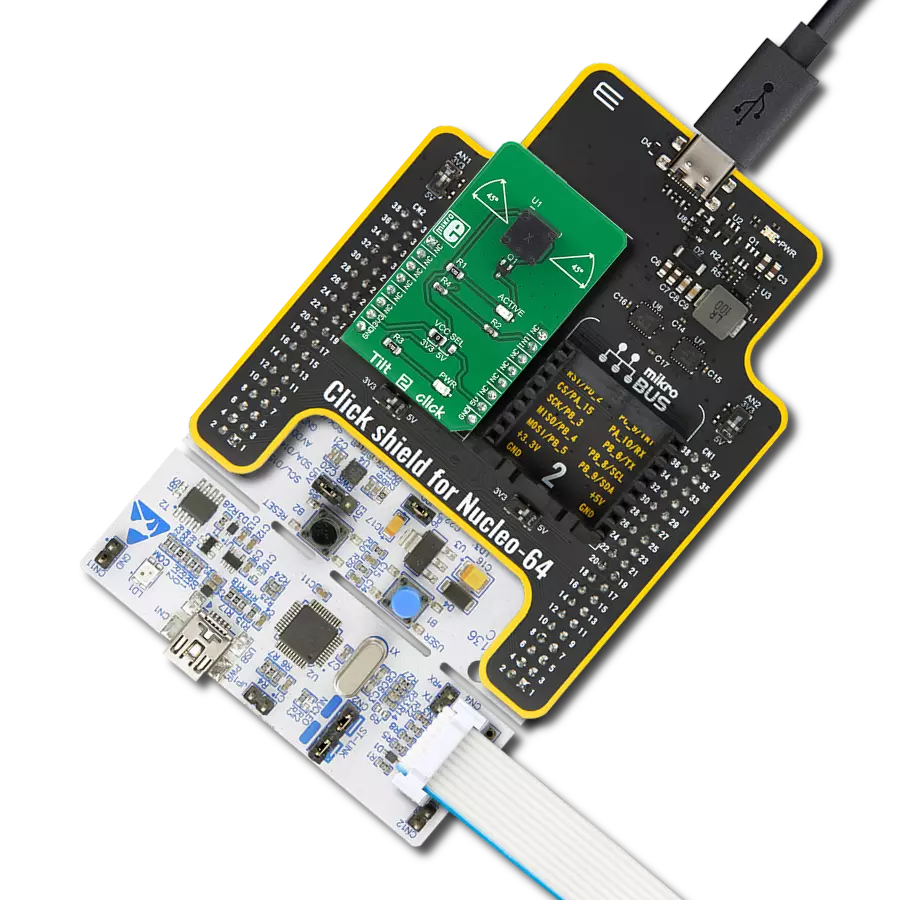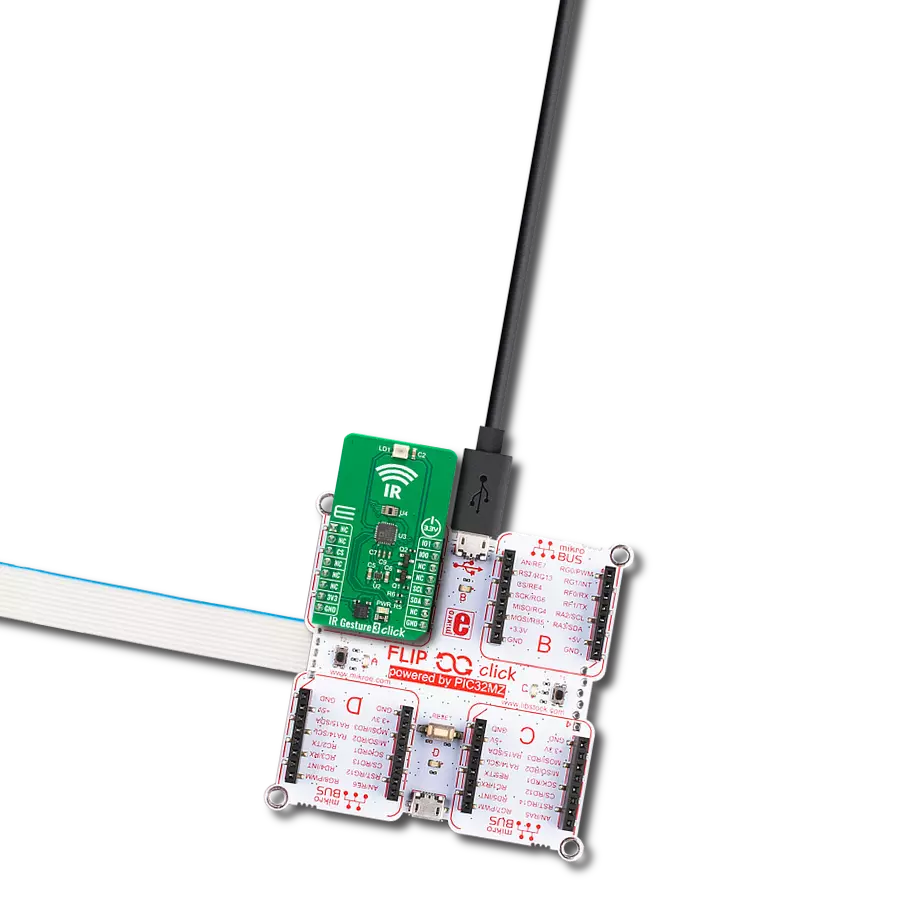Low-power three-axis angular rate sensor (gyroscope) designed for precise motion sensing applications
A
A
Hardware Overview
How does it work?
Gyro Click is based on the L3GD20, a high-performance 3-axis gyroscope from STMicroelectronics. The L3GD20 is manufactured using a dedicated micro-machining process developed by STMicroelectronics to produce inertial sensors and actuators on silicon wafers. It is highly configurable with a full-scale programmable range of ±250dps, ±500dps, and ±2000dps, i.e., low range for the high-precision measurement of slow motion and high range used for the measurement of ultra-rapid gestures and movements. This Click board™ allows using both I2C and SPI interfaces with a maximum frequency of 400kHz for I2C and 10MHz for SPI communication. The selection can be made by
positioning SMD jumpers labeled as COMM SEL in an appropriate position. Note that all the jumpers' positions must be on the same side, or the Click board™ may become unresponsive. While the I2C interface is selected, the L3GD20 allows choosing the least significant bit (LSB) of its I2C slave address using the SMD jumper labeled I2C ADD to an appropriate position marked as 0 and 1. The L3GD20 embeds 32 slots of 16-bit data FIFO for each output channel: yaw, pitch, and roll. This feature allows consistent power saving for the system since the host processor does not need to poll data from the sensor continuously but can wake up only when needed and burst the significant data from the FIFO. This buffer can
work in five modes: Bypass mode, FIFO mode, Stream mode, Bypass-to-Stream mode, and Stream-to-FIFO mode. Each mode is selected with the corresponding events detected on the interrupt and data-ready pins, routed to the INT and RST pins on the mikroBUS™ socket. This Click board™ can only be operated with a 3.3V logic voltage level. The board must perform appropriate logic voltage level conversion before using MCUs with different logic levels. However, the Click board™ comes equipped with a library containing functions and an example code that can be used as a reference for further development.
Features overview
Development board
Curiosity PIC32 MZ EF development board is a fully integrated 32-bit development platform featuring the high-performance PIC32MZ EF Series (PIC32MZ2048EFM) that has a 2MB Flash, 512KB RAM, integrated FPU, Crypto accelerator, and excellent connectivity options. It includes an integrated programmer and debugger, requiring no additional hardware. Users can expand
functionality through MIKROE mikroBUS™ Click™ adapter boards, add Ethernet connectivity with the Microchip PHY daughter board, add WiFi connectivity capability using the Microchip expansions boards, and add audio input and output capability with Microchip audio daughter boards. These boards are fully integrated into PIC32’s powerful software framework, MPLAB Harmony,
which provides a flexible and modular interface to application development a rich set of inter-operable software stacks (TCP-IP, USB), and easy-to-use features. The Curiosity PIC32 MZ EF development board offers expansion capabilities making it an excellent choice for a rapid prototyping board in Connectivity, IOT, and general-purpose applications.
Microcontroller Overview
MCU Card / MCU

Architecture
PIC32
MCU Memory (KB)
2048
Silicon Vendor
Microchip
Pin count
100
RAM (Bytes)
524288
Used MCU Pins
mikroBUS™ mapper
Take a closer look
Click board™ Schematic

Step by step
Project assembly
Software Support
Library Description
This library contains API for Gyro Click driver.
Key functions:
gyro_get_axis- This function get data from two L3GD20 registergyro_read_gyro- This function read Gyro X-axis, Y-axis and Z-axis axisgyro_read_temperature- This function read temperature data
Open Source
Code example
The complete application code and a ready-to-use project are available through the NECTO Studio Package Manager for direct installation in the NECTO Studio. The application code can also be found on the MIKROE GitHub account.
/*!
* \file
* \brief Gyro Click example
*
* # Description
* This example displays values of Gyro sensor (x, y, z axis).
*
* The demo application is composed of two sections :
*
* ## Application Init
* Initialization driver, initialize L3GD20 register and start write log.
*
* ## Application Task
* (code snippet) This is a example which demonstrates the use of Gyro Click board.
* Measured Gyro coordinates ( X-axis, Y-axis, Z-axis ) and temperature in degrees C are being sent
* to the Usart Terminal where you can track their changes.
* All data logs on usb uart for every 2 sec.
*
*
* \author MikroE Team
*
*/
// ------------------------------------------------------------------- INCLUDES
#include "board.h"
#include "log.h"
#include "gyro.h"
// ------------------------------------------------------------------ VARIABLES
static gyro_t gyro;
static log_t logger;
static int16_t gyrox;
static int16_t gyroy;
static int16_t gyroz;
static int8_t temperature;
// ------------------------------------------------------ APPLICATION FUNCTIONS
void application_init ( void )
{
log_cfg_t log_cfg;
gyro_cfg_t cfg;
/**
* Logger initialization.
* Default baud rate: 115200
* Default log level: LOG_LEVEL_DEBUG
* @note If USB_UART_RX and USB_UART_TX
* are defined as HAL_PIN_NC, you will
* need to define them manually for log to work.
* See @b LOG_MAP_USB_UART macro definition for detailed explanation.
*/
LOG_MAP_USB_UART( log_cfg );
log_init( &logger, &log_cfg );
log_info( &logger, "---- Application Init ----" );
// Click initialization.
gyro_cfg_setup( &cfg );
GYRO_MAP_MIKROBUS( cfg, MIKROBUS_1 );
gyro_init( &gyro, &cfg );
gyro_default_cfg ( &gyro);
}
void application_task ( void )
{
// Task implementation.
gyro_read_gyro( &gyro, &gyrox, &gyroy, &gyroz );
log_printf( &logger, " Axis X : %d \r\n", gyrox );
log_printf( &logger, " Axis Y : %d \r\n", gyroy );
log_printf( &logger, " Axis Z : %d \r\n", gyroz );
log_printf( &logger, "*****************************\r\n" );
Delay_ms ( 1000 );
Delay_ms ( 1000 );
}
int main ( void )
{
/* Do not remove this line or clock might not be set correctly. */
#ifdef PREINIT_SUPPORTED
preinit();
#endif
application_init( );
for ( ; ; )
{
application_task( );
}
return 0;
}
// ------------------------------------------------------------------------ END
Additional Support
Resources
Category:Motion

















